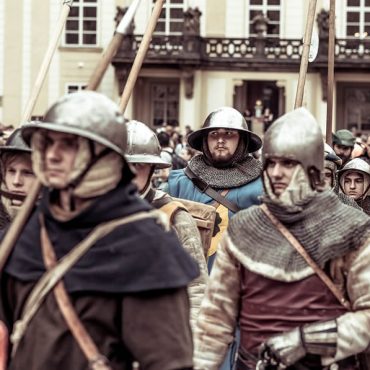For many aspiring actors, getting a job as a TV or film extra is often seen as a first step towards breaking into the industry. While it may not be the glamorous lead role that many dream of, being a background artist can offer valuable experience, exposure to the industry and the chance to work alongside established actors and crew members. However, what many extras don’t realise is that it can also occasionally (let’s be realistic) be a stepping stone to something more. In the UK, there are several stories of background artists who went on to have a speaking part in the same TV show or movie, and it’s a testament to their hard work, talent, and dedication to their craft.
One of the most well-known examples is Jane Slaughter, who played the role of Tracey in the long-running BBC soap opera EastEnders. Slaughter had been working as a TV extra for several years, appearing in various shows and films, including The Bill and Bridget Jones’s Diary, before landing a non-speaking role in EastEnders. Tracey, the silent barmaid of the Queen Vic, became a fan favourite despite her lack of dialogue, and Slaughter’s natural talent for physical comedy and facial expressions were widely praised.
After several years of playing the silent barmaid, Slaughter was eventually given speaking parts in the show, and her character’s personality and backstory were developed. Tracey’s first speaking line was “Two teas, love?” in a scene with Peggy Mitchell, played by Barbara Windsor, and it was a pivotal moment for the character and the actress. From that point on, Slaughter had a more prominent role in the show, with Tracey becoming a more fleshed-out character and a fixture of the EastEnders’ cast. Slaughter’s portrayal of Tracey earned her a loyal fan base and even a nomination for the “Best Newcomer” award at the National Television Awards in 2004.
EastEnders runs a very tight ship, with many extras in the “Square” and the studio and a busy schedule every filing day, so there is a lot of good fortune involved in being “spotted” in an environment like that, especially where background artists tend not to interact with most of the crew who might make such a decision.
Slaughter’s story is a testament to the fact that persistence, hard work, and talent can pay off in the entertainment industry. While her journey from extra to speaking role was a long one, her dedication and ability to make the most of her limited screen time eventually led to her becoming a beloved character and a regular on one of the UK’s most popular TV shows.
Another example is Andrew Ellis, who appeared as an extra in the British film This Is England. Ellis played the role of Gadget, one of the gang members in the film, and his performance was so impressive that he was later asked to audition for a leading role in the follow-up TV series, This Is England ’86. He landed the part of Gadget again, but this time with a significant increase in screen time and dialogue. Since then, Ellis has gone on to have a successful acting career, with roles in shows such as Hollyoaks and The Moorside.
And one extra (ha!) actor who started as an extra and went on to bigger things is Jamie Sives. Sives played the character of Jory Cassel in the first season of Game of Thrones, but before that, he had appeared as a background artist in several TV shows and films, including Braveheart and The Bill. Sives’ performance as Jory was praised by both fans and critics alike, and he later went on to secure roles in other high-profile productions, such as the TV series Frontier and the film Maleficent.
These are just a few examples of extras who have successfully made the transition to speaking roles, but there are countless others out there who have done the same. It’s important to remember that becoming a successful actor takes time, patience, and dedication, and starting as a background artist can be an excellent way to gain valuable experience and exposure. If you’re an aspiring actor, don’t be discouraged if your first few roles are small or non-speaking parts – it could be the beginning of something great.
So, to sum up, the journey from extra to actor is not an easy one, but it is possible. Jane Slaughter, Andrew Ellis, Jamie Sives and many others have proven that with hard work, talent, and a bit of luck, a background artist can become a leading actor. So, if you’re an extra with big dreams, keep pushing and don’t give up – you never know where your next role could take you.




